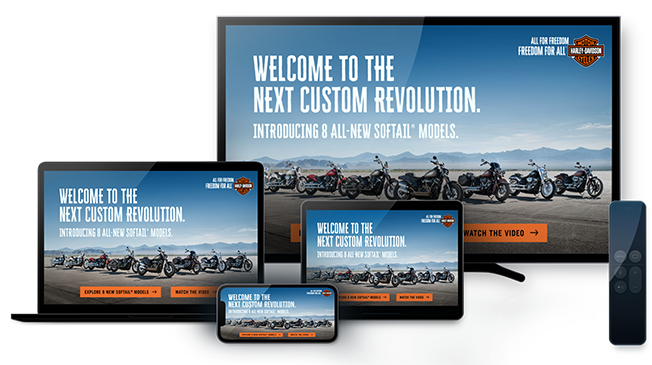A Check-In on the Ad Industry’s Commitment to Diverse-Owned Media

Amid the social upheaval of 2020, brands and ad agencies made lofty commitments in the name of racial justice: They’d invest more of their media spend in publishers owned by members of groups that were historically underrepresented in the ad industry, particularly Black-owned publishers. Four years later, it’s still not clear how much lasting change those promises have effected.
The Standard Media Index found that while spending with Black-owned media has tripled since 2020, it’s still sitting at just 1.6% of all agency spend. And, in fact, there’s been negative progress in some ways. A much-publicized backlash to diversity, equity, and inclusion (DEI) initiatives combined with economic challenges for the ad industry has meant that some of the executives who were tasked with multicultural and diverse outreach have found their resources slashed or even their jobs eliminated.
Dealing with this reality – and ensuring that the ad industry can live up to its promises – was the subject matter of an eye-opening panel at Cannes Lions co-hosted by Infillion and diverse publisher and creator network Mirror Digital, “What Does The Ad Industry Really Owe Diverse-Owned Media?” Moderated by Infillion chief revenue officer and CMO Laurel Rossi, the conversation was unafraid to address what panelists attested is a truly difficult situation.
“I’ve seen a lot of my friends lose jobs. I’ve seen a lot of our partners face really, really tough first halves of the year,” said Sheila Marmon, CEO of Mirror Digital, of the current economic and social climate. “People [are] struggling economically. It’s not a walk in the park from where I’m sitting.”
“At some point, usually if we’re in a recession, tough decisions start being made and the [roles] that start being cut are the multicultural or the diverse-owned,” said Mark Walker, CEO of diverse-focused programmatic ad tech company Direct Digital Holdings.
How Programmatic Can Solve the Problems It’s Created
Today, 90% of all display impressions are bought programmatically, and programmatic’s share of video advertising is growing fast. This isn’t always going over well with diverse-owned publishers. “Not everyone in our collective wants to participate in programmatic,” said Cavel Khan, chief growth officer of Group Black. “There’s a sense that it’s a race to the bottom, that it’s a commoditized version of the value they tried to create for their audiences.”
One of the most recent areas for concern in the ad industry has been the rise of made-for-advertising sites – low-quality pages designed for little more than to be stuffed with ads. In 2023, a report from the Association of National Advertisers (ANA) found that over 20% of programmatic ad impressions were going to sites designated as MFAs.
Advertisers swiftly pulled back on MFA spend, as an updated ANA report released during Cannes revealed. But this has had a disproportionate and undue impact on diverse-owned publishers, many of whom found themselves grouped among MFAs by accident.
“Diverse-owned media often does not have the traffic scale to make their publishing work, and so they buy traffic from other publishers like Facebook in order to get more traffic to their sites,” explained Lori Goode, chief marketing officer of supply-side platform Index Exchange and board member of industry DEI advocacy group BRIDGE. This is legitimate traffic to legitimate publications…[and the fear about] MFAs put them at a disadvantage.”
It’s up to programmatic technology companies themselves to right the ship. “We need to get transparency right, we need to get clear expectations, and we need to make programmatic well-lit and efficient,” Goode said.
Addressing the Scale Problem
The other challenge that diverse-owned publishers face with the rise of programmatic ad tech is that many programmatic processes are designed to reward the biggest media buys and audiences possible – which is inherently impossible for many diverse-owned publishers.
“When you have scale, you have economies of scale, and you can have your CPM go down for $10 billion more so that makes it easy,” Cavel Khan said. “The companies that we represent, they can’t do that. If you get that margin too low, they go out of business.”
Kimberly Jones, CEO of independent agency Butler/Till, described the agency’s ongoing commitment to reach a total of 10% of its total spend on diverse-owned media. The scale issue can get in the way of client thinking on this, too. “We do a lot of work in the pharma space, [where] you are looking for a particular patient population and so you need that extra data layer,” she explained, “but you can’t create scale and you can’t create efficiencies if you’re trying to curate marketplaces that are both diverse and are trying to meet certain patient populations.”
The paradigm has to shift here in the minds of media buyers. The numbers may look different, as may the metrics of success. “Let’s invest and let’s learn,” said Sheila Marmon. “And know that we may not get to incremental lift, we may not even get to the same KPIs as the rest of the campaign, but this is a moment to learn.”
Multicultural Ads – and Audiences – Aren’t a Novelty
Committing to diverse-owned publishers and their audiences isn’t a PR stunt, nor is it a short-term commitment. And the mainstream consumer base isn’t getting any less diverse. But all too often, multicultural advertising is seen as a test. This poses two problems: One, test spend is often the first to get cut in a downturn. Two, if a test doesn’t work, agencies and brands often see it (inaccurately) as representative of the whole sector, and assume multicultural advertising doesn’t work.
Advertisers who want results need to be willing to devote their spend to more than a standalone test. “If you’re not going to commit to a multi-year program, we’re not doing this,” said Cavel Khan.
“I think it all starts with a test budget, but a test budget with a commitment,” Direct Digital Holdings’ Mark Walker said.
Mirror Digital’s Sheila Marmon gave a nod to General Motors, one of the advertisers that she says is doubling down on multicultural and diverse-owned media authentically, and its media agency Carat. “They have been a partner, they have been willing to listen and learn and really understand our challenges, and respond not only with a direct investment in terms of our products and services but also really supporting the ecosystem with their investment fund,” Marmon said. GM is also “solving some of the larger ecosystem issues that are more difficult for one publisher, [especially] for one smaller-scale publisher, to solve on their own.”
These are the brands that will end up winning, the panelists emphasized. Social backlashes end. So do recessions. But consumers’ insistence that advertising speak to them authentically is unstoppable.
“I’m grateful that even with all that there are still champions you can find across certain brands and across certain agencies, and the initiatives haven’t all gone away,” Cavel Khan said. “It’s not going away because the population is not changing, and that’s where we have hope. Because culture is demanding it.”
Diversity in production and creative leadership is crucial, too – read more about it here in the recap of another panel we hosted at Cannes.
Subscribe to our blog:
Related Posts:

Independent Agencies Are Rewriting the DSP Rulebook
For more than a decade, programmatic buying relied on systems that delivered automation and scale, but offered limited visibility into how decisions were made. But those constraints are now harder for agencies to justify. Independent agencies are no longer willing to...

From Patchwork to Powerhouse: How Independent Agencies Buy Media Today
For years, independents were told they couldn’t match the scale or sophistication of the holding companies. That story is over. Our latest research, The Independent Agency Blueprint, shows independent agencies are blending old-school relationships with new-school...

How Real Attention Stops Ad Fraud in Its Tracks
Imagine you’re sitting at a nice table in your favorite restaurant. You order a meal—pricy but worth it—and get ready to dig in. The server brings you your dinner…and it’s missing an entire side dish. “Excuse me,” you might say. “Where is the rest of my food?” “Ah!...
Let's Connect

